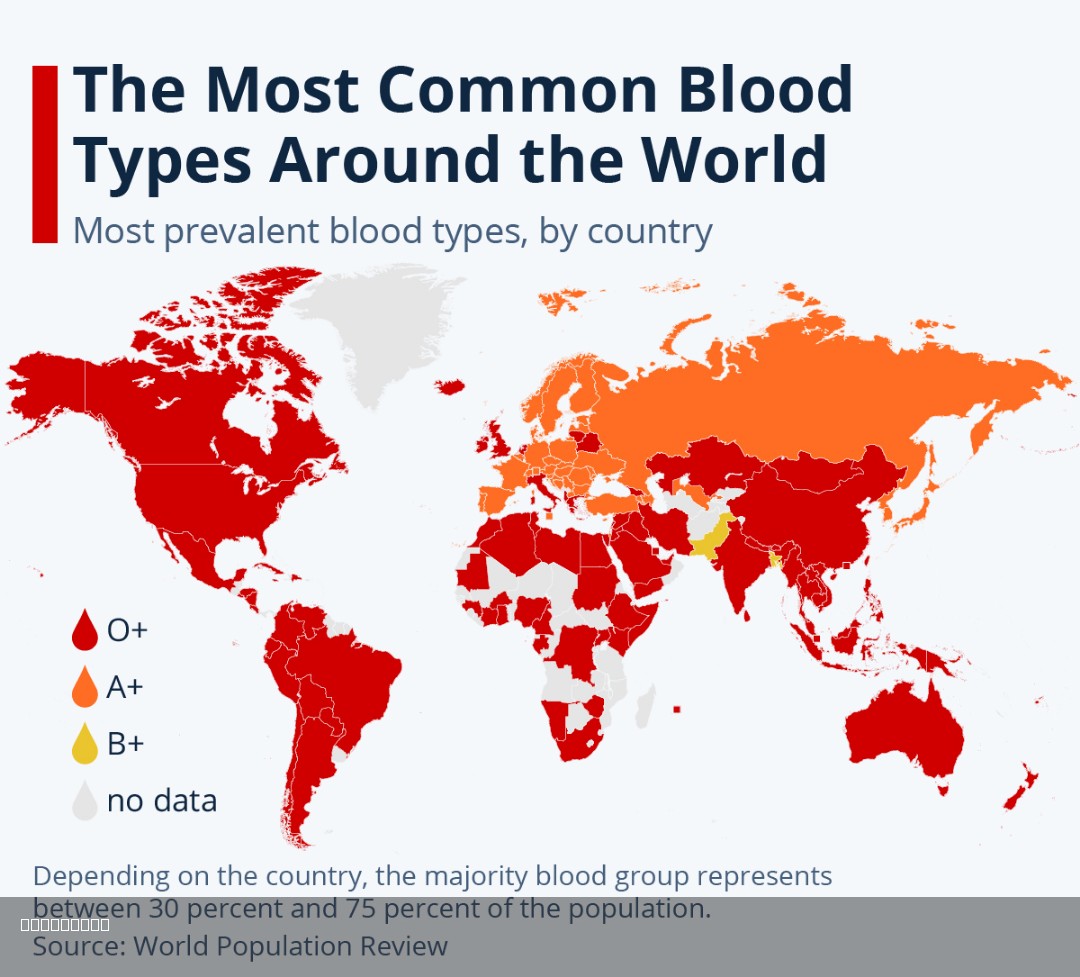Most Common Blood Types Around the World Map


Marcus Rodriguez
Historical Geography Expert
Marcus Rodriguez specializes in historical cartography and geographic data analysis. With a background in both history and geography, he brings unique...
Geographic Analysis
What This Map Shows
The "Most Common Blood Types Around the World Map" provides a visual representation of the distribution of blood types across various countries and regions. This intriguing map highlights the prevalence of different blood types, such as A, B, AB, and O, allowing us to see how they are distributed globally. Each region exhibits unique blood type frequencies, influenced by genetic, historical, and environmental factors. By examining this visualization, we can start to understand the diverse genetic tapestry that makes up humanity.
Deep Dive into Blood Types
Blood types are classified based on the presence or absence of specific antigens on the surface of red blood cells. The most commonly referenced blood group systems include the ABO system and the Rh factor. The ABO system categorizes blood into four main types: A, B, AB, and O. Interestingly, about 45% of the global population has type O blood, making it the most common blood type worldwide. Type A follows closely, comprising around 40% of the population, while type B and AB are less common, with about 11% and 4% respectively.
Ever wondered why certain blood types are more prevalent in specific regions? Genetics plays a crucial role in this variation. For example, some populations in Africa have a higher frequency of type O blood, which is thought to be a response to malaria, providing a survival advantage against the disease. Meanwhile, type B blood is more commonly found in populations in Central Asia, where it is believed to have arisen due to historical migrations and mixing of different ethnic groups.
The distribution of blood types also has medical implications. For instance, having type O blood can be advantageous in emergency situations, as O negative is considered the universal donor type. This is vital for blood transfusions, making the understanding of blood type distribution essential for healthcare planning and emergency response strategies. Furthermore, researchers are exploring potential links between blood types and susceptibility to certain diseases, although this area of study is still evolving and requires caution in interpretation.
Regional Analysis
When analyzing the map, several regional patterns emerge. In North America, for example, type O is prevalent among the majority, while type A blood is also common, reflecting the diverse ancestry of its population. In contrast, countries in East Asia, such as Japan and China, exhibit a higher frequency of type A blood. Interestingly, in South America, type O remains dominant, particularly among Indigenous populations, illustrating historical genetic influences.
In Europe, blood type distributions vary significantly from one country to another. Scandinavian countries tend to have a higher percentage of type A blood, while in Eastern Europe, type B is more prevalent. These regional differences can often be traced back to historical migrations, population bottlenecks, and even cultural factors that influence mate selection and population mixing.
The Middle East also shows fascinating blood type diversity, with type O being common in many areas, but with notable pockets of type A and B blood as well. This can be attributed to the region's complex history of trade, migration, and conquests that have intermingled different ethnic groups over millennia.
Significance and Impact
Understanding blood type distributions is not merely an academic exercise; it has real-world implications. For instance, this knowledge is crucial for public health initiatives, especially in regions where certain blood types are in high demand for transfusions. Moreover, as globalization continues to increase, the movement of people across borders can lead to new insights into blood type compatibility and transfusion medicine.
Interestingly, current trends in genetics and medicine are prompting discussions about personalized medicine based on blood type. Researchers are investigating how blood type might influence reactions to certain medications, diet responses, and susceptibility to diseases. As science advances, the mapping of blood types could become even more significant in understanding human health and disease management.
In conclusion, the "Most Common Blood Types Around the World Map" not only provides a snapshot of global blood type distribution but also opens the door to understanding the complex interplay between genetics, health, and history. It invites us to consider how our biological makeup influences our lives and communities, emphasizing the importance of blood type knowledge in medicine and public health.
Visualization Details
- Published
- August 3, 2025
- Views
- 298
Comments
Loading comments...